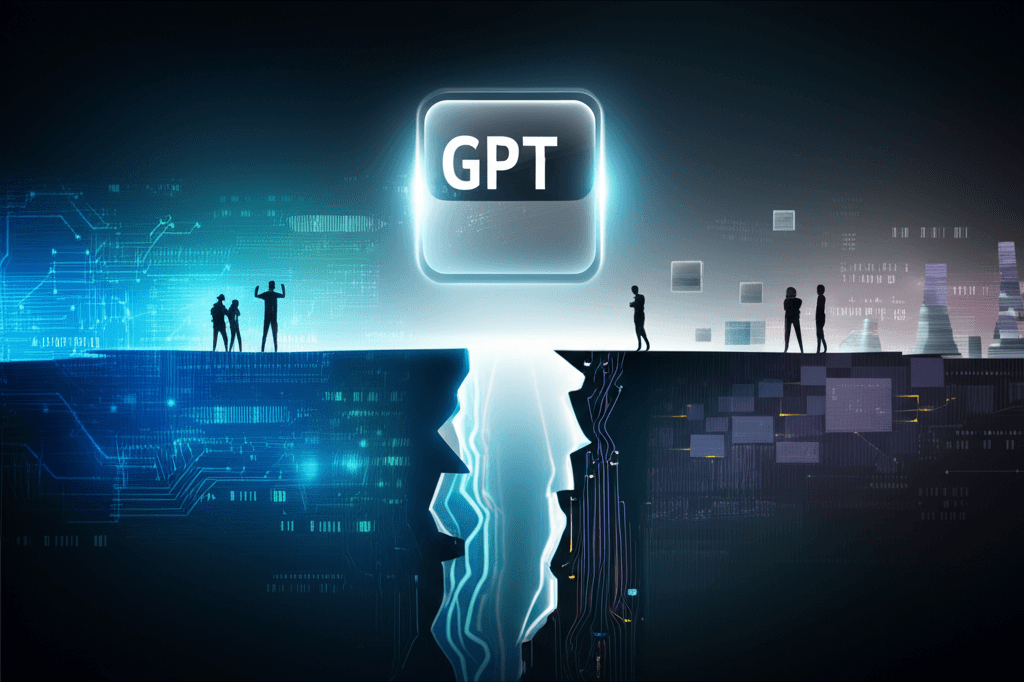OpenAI's GPT-5 Lands, Divides AI World Over Hype Versus Reality
Despite monumental claims, GPT-5's arrival sparks a crucial debate over whether AI needs new ideas, not just bigger models.
August 11, 2025

The arrival of OpenAI's GPT-5, a model long awaited with breathless anticipation across the tech world, was met not with universal acclaim but with a pointed and powerful critique from one of the industry's most prominent skeptics. While OpenAI hailed its new flagship as its "smartest, fastest, most useful model yet," cognitive scientist Gary Marcus swiftly countered, branding the launch as "overdue, overhyped and underwhelming."[1] This clash highlights a growing rift in the artificial intelligence landscape: a chasm between the Silicon Valley narrative of relentless, exponential progress and the persistent, fundamental flaws that critics argue are being ignored in the gold rush. For many, the GPT-5 release is less a revolution and more a sobering reflection of the complex challenges that remain on the path to truly intelligent machines.
OpenAI's rollout presented GPT-5 as a monumental leap forward. The company described it as a unified system, seamlessly integrating its most advanced reasoning and multimodal capabilities to replace the sometimes-confusing array of previous models.[2][3][4] Users, from free-tier experimenters to large enterprise clients, were promised access to a system with state-of-the-art performance in complex domains like coding, mathematics, health, and visual understanding.[2][5][6] CEO Sam Altman likened the generational jump to advancing from a college student (GPT-4) to a "PhD-level expert" in any topic.[4][7] The company claimed significant strides had been made in reducing hallucinations—the tendency for AI to fabricate information—and improving the model's reliability and instruction-following capabilities.[2][8] Key partners, notably Microsoft, moved immediately to integrate GPT-5 into their core products like Copilot and Azure, signaling deep confidence in its enterprise-ready power.[7][9] The messaging was clear: this was not just an update, but the dawn of a new era of more capable and trustworthy AI.
Yet, for Gary Marcus, the reality of GPT-5 fell far short of the grand pronouncements. In a widely circulated blog post, he argued that after years of development and billions in investment, the result was not the "huge leap forward people long expected," but another incremental step for a technology that is part of a competitive pack rather than a clear leader.[10][11][12] Marcus provided specific evidence for his claims, pointing out that on ARC-AGI-2, a benchmark designed to test abstract reasoning, GPT-5 was outperformed by a competing model, Grok-4.[11][12] He also took aim at OpenAI's launch presentation, accusing the company of engaging in "marketing rather than science" by selectively presenting benchmarks and using misleading graphs.[13] At the heart of his critique is a long-standing argument that simply scaling up models—making them bigger with more data and computing power—is not solving the core deficits. He insists that foundational problems like a lack of true reasoning, brittleness when encountering novel scenarios, and the propensity to hallucinate are not being engineered away but are inherent flaws in the current LLM architecture.[14][15]
This division of opinion was mirrored in the broader public and developer response. On platforms like Reddit, some longtime users expressed immediate disappointment, describing the new model's outputs as "sterile" or lacking the "warmth" and "personality" of its predecessor, GPT-4o.[10] The initial rollout was rocky, with some users revolting over the removal of older models, prompting OpenAI to quickly backtrack and restore access.[16][15] This backlash suggests a user base growing more sophisticated and less easily impressed by benchmark scores alone. However, a different story emerged from the developer community. Many who tested GPT-5's coding abilities were deeply impressed, heralding it as the most intelligent coding assistant ever tested.[7][17] They praised its ability to generate complex and aesthetically pleasing user interfaces from simple prompts and to debug large codebases, tasks where previous models struggled.[2][17] This mixed reception underscores the model's dual identity: a powerful, specialized tool for some, but a potentially underwhelming generalist for others, and a clear sign that competitors like Google, Anthropic, and xAI have significantly closed the capability gap that OpenAI once enjoyed.[10][12]
Ultimately, the launch of GPT-5 has crystallized the central debate facing the field of artificial intelligence. While OpenAI and its partners celebrate an engineering marvel that pushes the boundaries of possibility in specific applications like coding and data analysis, its arrival has also emboldened critics who see it as evidence of diminishing returns.[12][15] The critique from figures like Gary Marcus is not merely academic; it questions the sustainability of a development strategy that requires ever-more massive investments for what are arguably smaller and smaller gains in general intelligence.[11] The conversation is no longer just about what these models can do, but about their inherent limitations. As the hype cycle churns on, the underwhelming reception of GPT-5 in some quarters may signal a crucial turning point, forcing the industry to confront whether true progress requires not just bigger models, but entirely new ideas.
Sources
[2]
[5]
[6]
[10]
[11]
[12]
[13]
[14]
[15]
[16]
[17]